In about 1980, Passenger Train Journal called the California Zephyr “the classic train of our time” even though the Chicago-Oakland train had stopped running a decade before. What made the CZ special was that, as one ad said, it was the first transcontinental train “designed and timed [more] for sightseeing” than for getting from one place to another. While only the third train to have dome cars, it was the first to travel through scenery that truly deserved dome cars.
When the California Zephyr began running in 1949, the City of San Francisco was still on a 39-3/4-hour schedule aimed at attracting business travelers. The California Zephyr required 10-1/2 hours more, so rather than compete with the City on time, the Cal Zephyr competed on scenery: it was timed so that passengers could see the best scenery in Colorado, Utah, and California in daylight, while they slept through the relatively boring parts across Nevada and the Great Plains. The domeless City train, by comparison, crossed relatively desolate southern Wyoming during daylight hours and went over the scenic Sierra Nevada at night.
 Click image to download a 2.0-MB PDF of this 20-page brochure.
Click image to download a 2.0-MB PDF of this 20-page brochure.
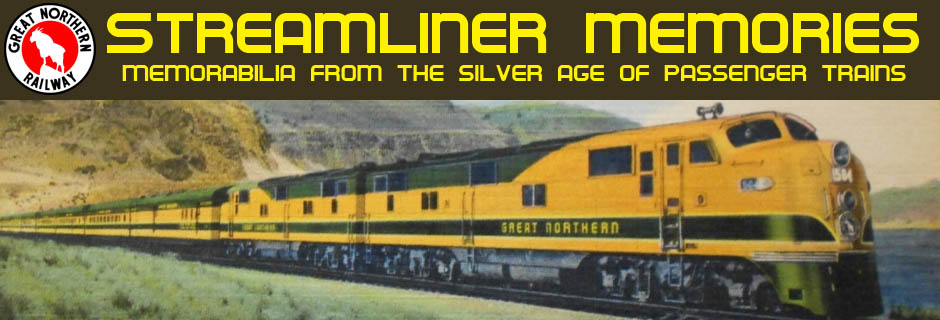
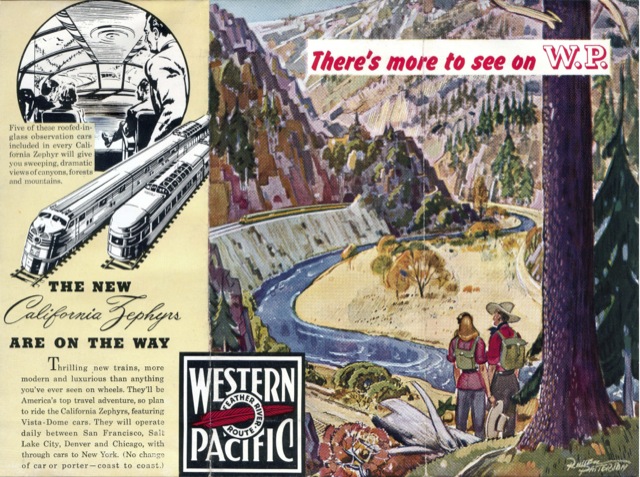
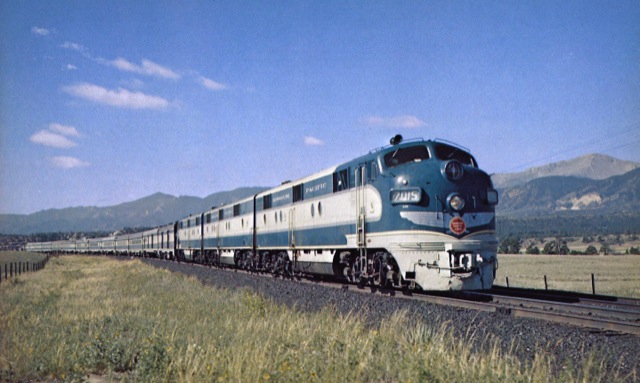
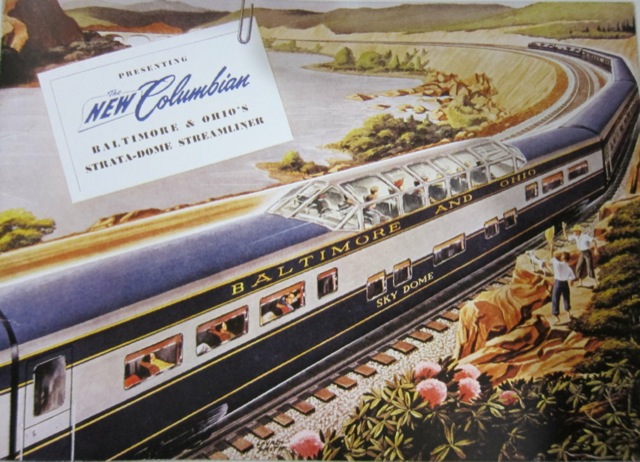
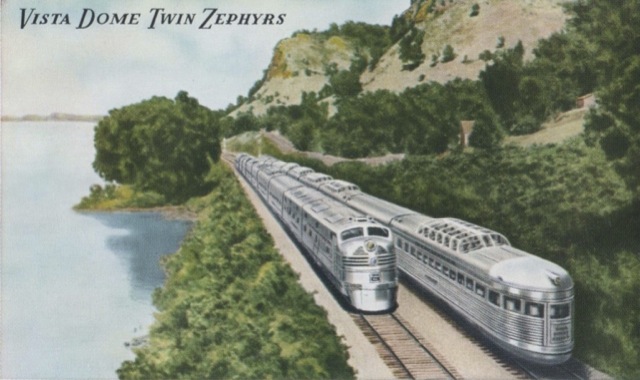

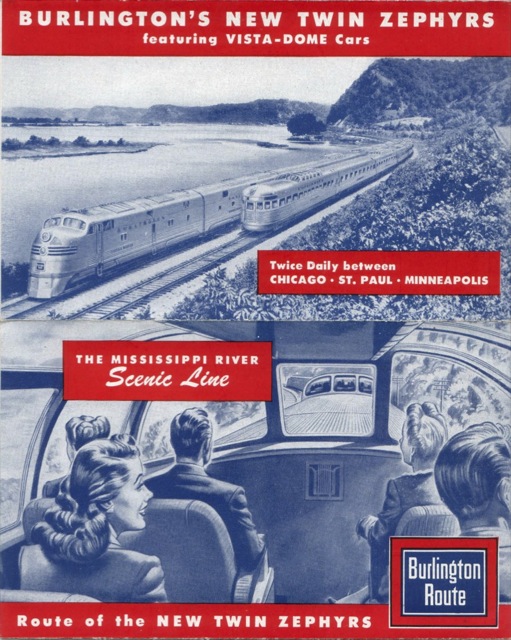


 General Motors staged this photo of the Train of Tomorrow near Lake Orion, Michigan.
General Motors staged this photo of the Train of Tomorrow near Lake Orion, Michigan.